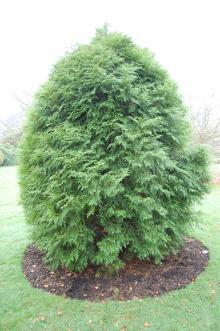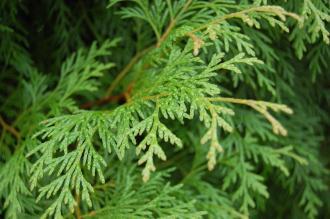
Calocedrus formosana (06/01/2013, Kew Gardens, London)
Position: Full sun to light shade
Flowering period: Summer
Soil: Moist, well drained
Eventual Height: 25m
Eventual Spread: 15m
Hardiness: 9a – 10a
Family: Cupressaceae
Calocedrus formosana is a medium sized evergreen tree. Its mid to glaucus green leaves are scale like, up to 8mm long and appear in flattened splays. Its trunk may achieve a diameter of up to 3m. Its orange/ brown bark becomes gray and fissured with age and exfoliates in long strips. Its flowers are in the form of pollen cones and are up to 5mm long. Its fruit are seed cones, up to 15mm long, initially pale purple and maturing to brown.
Calocedrus formosana, commonly known as Taiwan Incense Cedar or Yellow Flesh Tree, is native to Taiwan. In its native habitat it occurs in mixed evergreen forests. Calocedrus formosana is synonymous with Calocedrus macrolepis var. formosana. Calocedrus formosana is classified as Endangered according to the IUCN Red List of Threatened Species.
The etymological root of the binomial name Calocedrus is derived from the Greek Kalos meaning ‘beautiful’ and Cedrus another genus of coniferous tree. Formosana is derived from the former name of Taiwan, Formosa.
Although not commonly available the landscape architect may find Calocedrus formosana useful as an attractive evergreen tree.
Ecologically, Calocedrus formosana seeds are attractive to some birds.

Calocedrus formosana Leaf (06/01/2013, Kew Gardens, London)
Calocedrus formosana prefers moist, fertile, well-drained soils. It tolerates most pH of soil.
Calocedrus formosana requires little maintenance.

